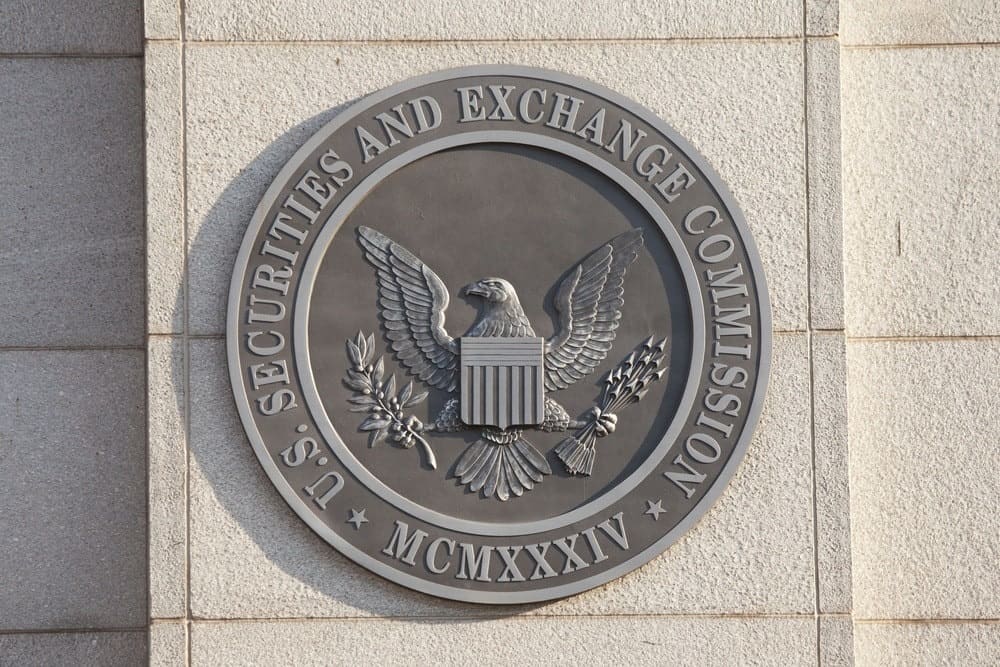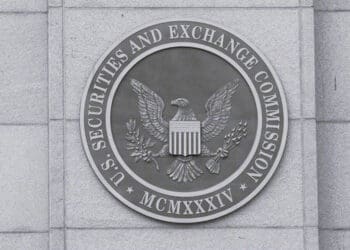Comment letters from the SEC can come out of the blue, require a lot of work involving executive leadership and the board and result in changes to disclosures and internal processes. Parker Poe’s Julie Rizzo and Doug Harmon provide tactical guidance on planning in advance and responding well.
Receiving a comment letter from the Securities and Exchange Commission (SEC) can be a daunting experience. A comment letter, which is a letter sent by the Division of Corporation Finance staff containing comments on disclosures a company has made in an SEC filing, can come out of the blue, require a significant amount of work that includes executive and board involvement and result in changes to disclosures and internal processes. At the completion of the comment letter review process, the correspondence between the SEC and the company is made public, so a poorly handled response can bring a company unwelcome attention and reveal missteps.
Thorough preparation is critical to successfully navigating the comment letter process, from before the letter arrives to after the completion of a response. From our collective experience on multiple sides of that process – sending out letters as a member of the SEC’s Division of Corporation Finance, responding in-house at a publicly traded company and counseling public companies on their responses – here are a few practical tips.
Before the Letter Comes
Even before receiving a comment letter, it is important to take the time to think about who in the company could receive the comment letter. SEC filings made under the Securities Exchange Act of 1934 do not require a company to provide information beyond the address of its principal executive offices and its telephone number. This means that before SEC staff members can send a letter, they will first need to contact the company to find out where to send it.
The staff may call the telephone number on the cover page of the Exchange Act filing in question and ask to speak to someone who signed the filing. It is important to make sure that anyone who may answer that telephone number or who signed the filing (or who may answer on behalf of those persons) knows how to handle and direct a call from the SEC. It can be helpful to provide a set of instructions and a list of persons to whom the call should be directed. Remember to list several people within the company in case anyone is out of the office or otherwise unavailable. Given the importance of being responsive to a call from the SEC, this will help to start the relationship with the staff off on the right foot.
In addition, it can be helpful for a company to have already considered who will comprise its core team in responding to a comment letter. While the exact personnel will vary some based on the specific comments (as we will discuss in further detail below), certain members of an organization are typically always involved, such as the general counsel and chief financial officer. Other candidates might include the head of SEC reporting and the head of investor relations. Determine the core team at your company and who the backups would be if any of them are out of the office so upon receipt of a letter the core team can get right to work.
Once the Letter Arrives
First, stop and take a deep breath. When Julie was a part of the SEC staff, she once had an in-house attorney tell her at the completion of a comment letter review that he had thought his life was over when he received the letter. While this may seem a little dramatic, we expect he is not the only recipient to experience such a feeling.
Next, carefully read the entire letter. This may sound obvious, but there is often a temptation to focus solely on the comments. The other parts of the letter will provide information on when a response should be made (typically 10 business days for an Exchange Act filing) and whether any changes to the company’s disclosure as a result of the comments can be made in future filings with the SEC. It also provides contact information for the staff members who prepared the letter.
After reading the full letter, it is time to think through who else needs to be involved in preparing the response letter. It is almost always advisable to partner with experienced outside counsel from the beginning of the process. If there are accounting comments, members of the finance team should be involved, as well as the company’s audit committee and outside auditors. If there are comments that deal with executive compensation disclosures, the compensation committee and head of human resources should be involved. Help from other groups within the company may be needed to respond as well. For example, if the comment letter asks about a specific customer, the person who works directly with that customer may need to be a part of the team. If any data needs to be collected as part of the response, determine who within the organization can help provide that information.
Additionally, set a realistic time frame for preparing the response letter. If the comment letter asks for a response in 10 business days and it may take longer to respond – for example, the SEC sends the letter right before a holiday when people are out of the office – call the staff listed in the letter and ask for an extension. Before making that call, be sure to realistically think through the response timeline so you can propose a date that is reasonable and achievable and explain why an extension is needed. Note that “we’re really busy” is never a good reason. There is no benefit to waiting to ask for an extension.
Also, when communicating with the SEC staff in writing or by telephone, remember that they are not your adversaries. SEC staff members are professionals who reviewed your company’s disclosures for accuracy, completeness and compliance with the SEC’s rules. Often, they are just trying to understand better how or why you disclosed something in a certain way or chose not to disclose it at all. Frequently, they can come to understand and agree with a company’s view that no disclosure change is required in response to a comment. It is far better to begin the process assuming that this will be a collaborative and professional experience.
Preparing the Response Letter
Once the team responding to the letter has been assembled and the timeline has been set out, it is time to draft the responses. It is helpful to use available resources (including the SEC’s website) to find other companies that have received similar comments. This can provide a sense of the staff’s basis for the comment and how other companies have responded.
If the team is unclear on what exactly certain comments are asking for, don’t hesitate to call (or have outside counsel call) the staff members listed in the letter. While a company should not expect staff members to clear a response to a comment over the telephone – a signed response letter needs to be submitted via the SEC’s EDGAR system – they will be happy to clarify any questions on the comments issued. However, be sure to prepare any questions in advance of the call; this will help the call go more smoothly and avoid the need for a follow-up call for a forgotten question. It is also helpful to have at least two people on the call – one person who takes the lead on asking the questions and one who focuses on memorializing the conversation.
When drafting responses to the comments, make sure to review the company’s public disclosures. When the staff reviews a filing, they will often look at other information about the company, such as the company’s website, earnings releases, investor or analyst presentations and news articles. The company’s responses should be consistent with its other public disclosures and avoid statements that contradict previous disclosures. Not only can being asked about discrepancies in a subsequent comment letter be embarrassing, it could potentially raise broader and more substantive questions regarding what controls the company has relating to its public disclosures. It can also be helpful to consider when a company will make its next public disclosures. For example, if a company receives a comment letter within weeks of its next earnings announcement, the head of investor relations should be involved in the preparation of the response letter at a minimum to help ensure that nothing in the response letter is or will be inconsistent with any disclosures made as part of the earnings release.
If the comment letter asks for any disclosure changes to be made in a future filing, carefully consider how realistic it will be that nothing changes between now and when that future filing will be made that could impact the proposed language. While it can seem comforting to have the staff review the proposed language the company plans to use in a future filing, changing the agreed-upon language (whether in minor or significant ways) in the future filing can risk receiving another comment letter and call into question whether the company will stick to similar representations made in future response letters. When preparing the response letter, a company should not only review its prior public disclosures and understand its current operating environment, but also think about where the company may be several months from now when it will make its next filing with the SEC.
Finally, make sure to build in time to prepare the response letter to be filed via the SEC’s EDGAR system. Depending on the number of comments in the original letter and the length of the responses, it can take up to a day or longer to finalize the letter for submission. Since response letters typically repeat each SEC comment, a company can begin this process sooner by preparing a shell response letter just listing the SEC comments and leaving space for the responses. That way the financial printer can begin to put the letter on its system while the company is working on the responses. Also make sure the letter is signed by an appropriate person and a conforming signature is put on the response letter submitted though the EDGAR system. Additionally, specify who the SEC staff should contact in case of any questions and where the staff should send any subsequent letters.
After Submitting the Response
Once the company has submitted the response and worked through the review process with the staff – which can take up to several weeks, require several rounds of back-and-forth with the staff and involve other considerations that are beyond the scope of this article — there are important record-keeping matters to undertake. Keep a log of all comment letters received from the SEC and all responses to those comment letters. These logs should be reviewed each time a future filing is prepared by the company. This can help the company to remember to focus on, as part of its standard filing preparation, disclosures that were the subject of prior SEC comments, as well as ensure that it revises its filings consistent with commitments made in past response letters. There is no easier way for a company to make a misstep with the staff than to commit to revising its disclosures in a future filing and then not do so. Having a review log of the comments will help prevent this and ensure future disclosures are consistent in general with responses made to the comment letters.
Conclusion
Whether compliance professionals find themselves receiving an SEC comment letter for the first time or the 10th time, the tips outlined above can help you and your organization navigate the process. While it can seem daunting even to an experienced professional, thorough preparation – from before the letter arrives to after the completion of the comment letter review – can help make the process that much smoother and easier for everyone involved. As a result, your company will be in a stronger position to handle this critical aspect of SEC compliance.



 Julie Rizzo is an attorney at
Julie Rizzo is an attorney at  Doug Harmon is an attorney at Parker Poe. Doug leads the firm’s Securities & Corporate Governance Group and its Public Company Growth & Compliance Group and co-leads the Governance, Risk & Compliance Group. With more than 30 years of experience, he represents domestic and international public and private entities in a full array of capital markets and finance, merger and acquisition, securities compliance and corporate governance, risk and compliance matters. The Compliance Certification Board has accredited him as an Certified Compliance & Ethics Professional (CCEP and CCEP-International)®.
Doug has worked with clients from a wide range of industries, including energy, financial services, manufacturing, retail, sports and entertainment and technology.
He has been honored as one of Woodward/White’s The Best Lawyers in America in Securities Law since 2007 and is a member of the Energy Bar Association.
Doug Harmon is an attorney at Parker Poe. Doug leads the firm’s Securities & Corporate Governance Group and its Public Company Growth & Compliance Group and co-leads the Governance, Risk & Compliance Group. With more than 30 years of experience, he represents domestic and international public and private entities in a full array of capital markets and finance, merger and acquisition, securities compliance and corporate governance, risk and compliance matters. The Compliance Certification Board has accredited him as an Certified Compliance & Ethics Professional (CCEP and CCEP-International)®.
Doug has worked with clients from a wide range of industries, including energy, financial services, manufacturing, retail, sports and entertainment and technology.
He has been honored as one of Woodward/White’s The Best Lawyers in America in Securities Law since 2007 and is a member of the Energy Bar Association.







